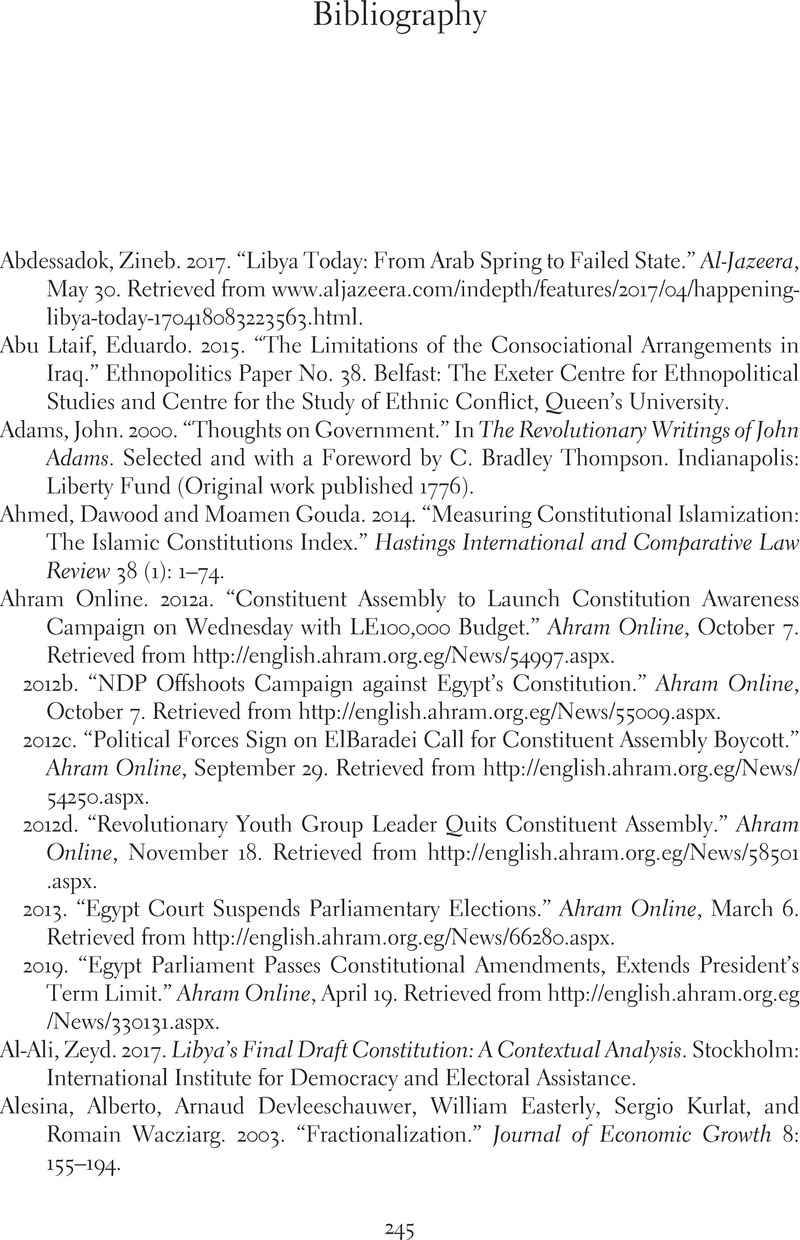Book contents
- The “Fall” of the Arab Spring
- Comparative Constitutional Law and Policy
- The “Fall” of the Arab Spring
- Copyright page
- Dedication
- Contents
- Figures
- Tables
- Acknowledgments
- Introduction
- 1 Constitutions, Civil Society, and Democratization in the Arab World
- 2 Democratizing the Parchments
- 3 Constitutional Negotiations and the Pathway to Democratic Transition
- 4 Pathways of Failure
- 5 Pathways of Failure
- 6 Pathways of Failure
- 7 Lessons from the “Fall” of the Arab Spring
- Bibliography
- Index
- References
Bibliography
Published online by Cambridge University Press: 31 March 2022
- The “Fall” of the Arab Spring
- Comparative Constitutional Law and Policy
- The “Fall” of the Arab Spring
- Copyright page
- Dedication
- Contents
- Figures
- Tables
- Acknowledgments
- Introduction
- 1 Constitutions, Civil Society, and Democratization in the Arab World
- 2 Democratizing the Parchments
- 3 Constitutional Negotiations and the Pathway to Democratic Transition
- 4 Pathways of Failure
- 5 Pathways of Failure
- 6 Pathways of Failure
- 7 Lessons from the “Fall” of the Arab Spring
- Bibliography
- Index
- References
Summary

Information
- Type
- Chapter
- Information
- The 'Fall' of the Arab SpringDemocracy's Challenges and Efforts to Reconstitute the Middle East, pp. 245 - 261Publisher: Cambridge University PressPrint publication year: 2022
